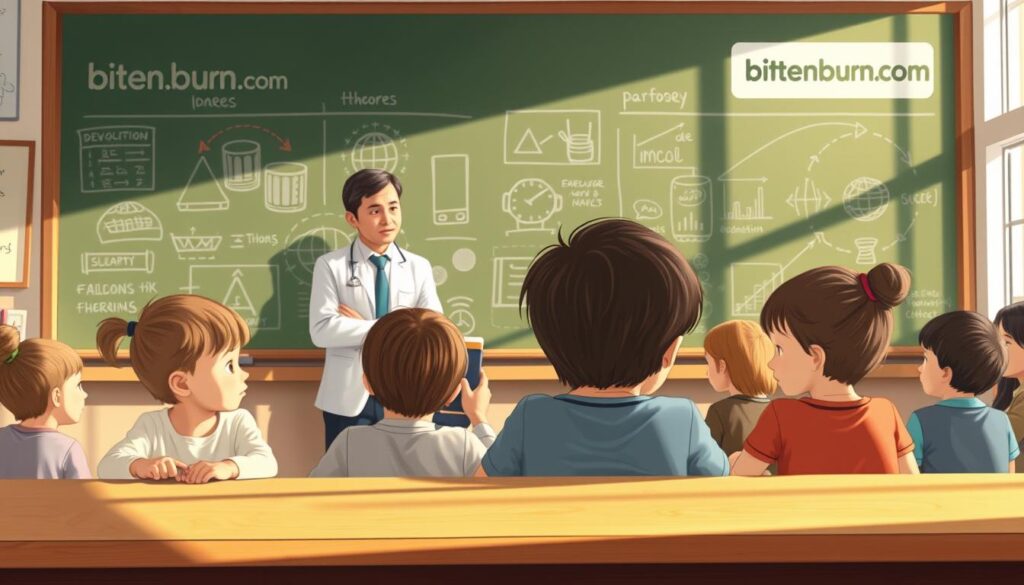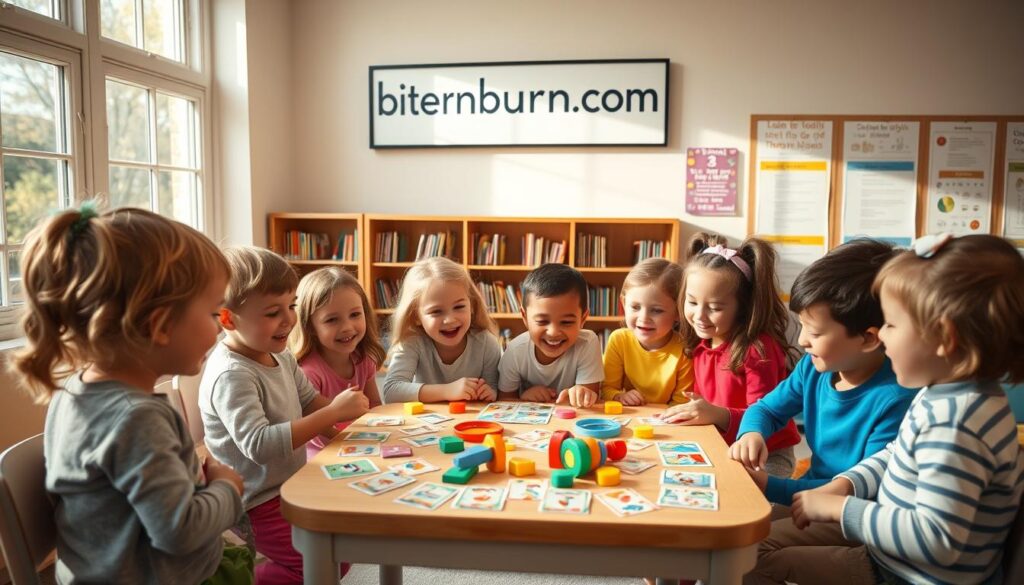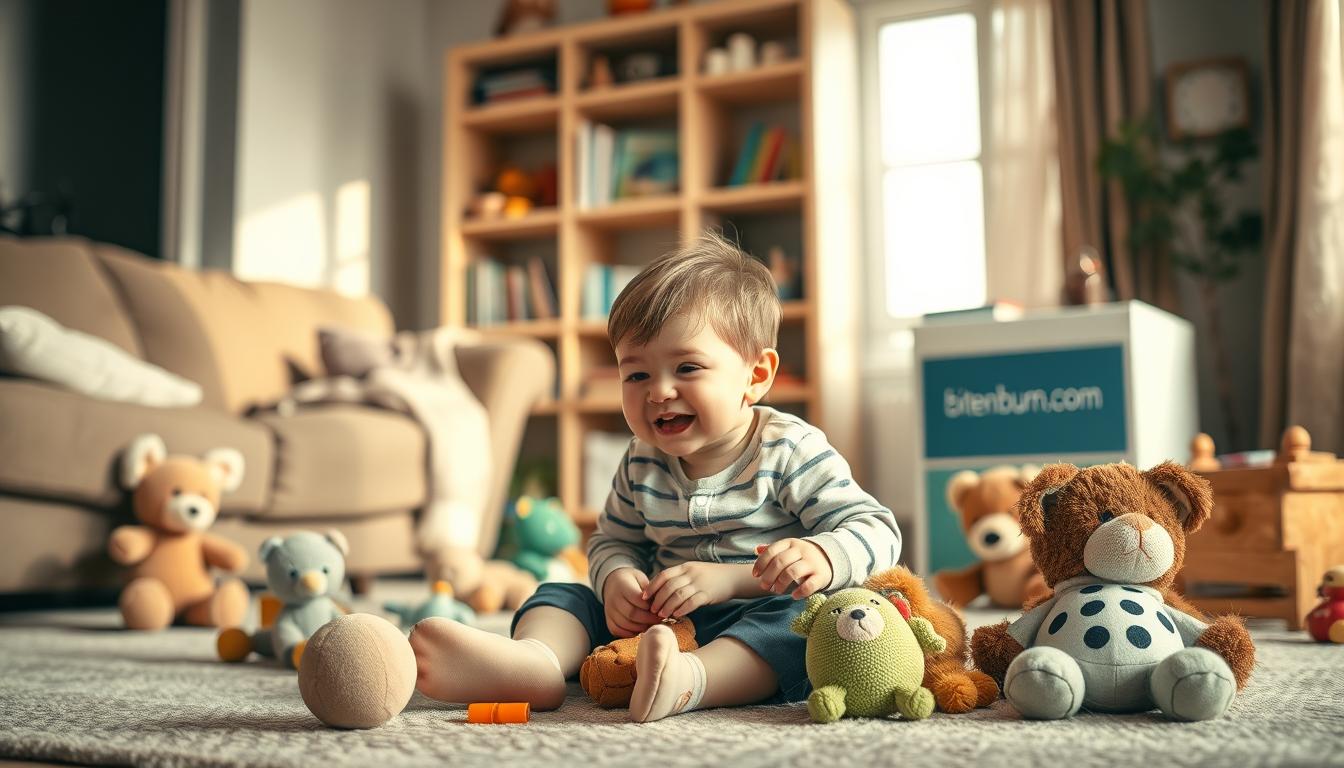Did you know 85% of a child’s core emotional patterns are established by age 5? This critical window shapes how they process feelings, build relationships, and respond to challenges throughout life. Our guide unlocks the science behind these formative years, revealing how caregivers can actively nurture lifelong emotional health.
We break down how young minds evolve through dynamic interactions with their surroundings. Every laugh, tear, or frustrated stomp reflects intricate connections between biology, behavior, and environment. These moments aren’t random – they’re stepping stones in a systematic journey.
Our analysis combines cutting-edge research with practical strategies. You’ll discover how expressive cues, social contexts, and cognitive growth intertwine to build emotional intelligence. This isn’t just theory – it’s a roadmap for fostering resilience and empathy during pivotal learning phases.
Key Takeaways
- Foundational emotional patterns form before kindergarten age
- Growth occurs through continuous environment interactions
- Multiple factors shape how feelings are expressed and managed
- Caregiver support directly impacts social skill development
- Practical strategies enhance relationship-building abilities
Through real-world examples and evidence-based methods, we reveal how to recognize progress markers at each phase. Whether you’re a parent or educator, this knowledge transforms how you guide young learners through emotional milestones.
Understanding Early Childhood Emotional Development Stages
The foundation of how children manage feelings is built through predictable, age-linked transformations. We map these progressions using observable behaviors that reflect growing emotional intelligence. This framework helps caregivers recognize typical patterns and identify when support might be needed.
Defining Key Emotional Milestones
Infants (0-12 months) master basic self-regulation through caregiver-guided rhythms. Studies show responsive parenting during this period strengthens neural pathways for stress management. By 18 months, toddlers start recognizing their reflection and develop distinct emotional responses to success or failure.
Preschoolers demonstrate a leap in emotional sophistication. They begin using pretend play to process complex feelings and grasp that facial expressions don’t always mirror true emotions. As one researcher notes:
“Pretend scenarios let young minds rehearse social scripts safely, building emotional muscle memory.”
| Age Range | Key Milestones | Social Cues |
|---|---|---|
| 1-2 years | Self-awareness emerges | Seeks approval through eye contact |
| 3-4 years | Uses words for feelings | Shares toys to comfort peers |
| 5-7 years | Manages embarrassment | Uses humor to deflect attention |
The Role of Environment and Social Interaction
Daily exchanges shape how kids interpret emotions. Children raised in talkative households typically develop richer emotional vocabularies by age 4. Group settings provide practice in reading subtle social signals – a skill linked to later academic success.
Cultural norms influence expression styles. Some communities encourage emotional openness, while others value composed responses. Our analysis confirms that consistent, warm interactions help children adapt their emotional responses appropriately across different contexts.
The Role of Caregivers in Enhancing Emotional Competence

Caregivers shape how young minds process feelings through everyday moments. Their reactions to tantrums, laughter, or fear directly influence whether kids learn to manage emotions effectively. We’ll explore proven methods that build confidence and connection.
Supportive vs. Nonsupportive Socialization Strategies
Effective caregivers act as emotion coaches. They name feelings (“You’re frustrated because the tower fell”) and validate experiences. This approach helps children understand their reactions while feeling supported. Research shows kids with emotion-coaching parents develop better friendship skills by age 8.
| Strategy Type | Key Actions | Outcomes |
|---|---|---|
| Supportive | Label emotions, offer comfort, teach coping | Strong self-regulation |
| Nonsupportive | Dismiss feelings, threaten punishment | Increased anxiety |
Building Secure Attachment Through Responsive Care
Consistency matters more than perfection. When caregivers promptly address needs 70% of the time, children develop trust in relationships. A study from the American Psychological Association found that predictable responses reduce stress hormones by 40% during conflicts.
Try these responsive techniques:
- Mirror facial expressions during play
- Use calm tones when setting limits
- Describe your own emotions aloud
As one child psychologist explains:
“Security grows when children know their signals get heard – even if the answer is sometimes ‘no.'”
Identifying Key Milestones in Social and Emotional Growth
Social growth patterns follow observable sequences that predict future relationship skills. We map seven core competencies recognized by leading developmental frameworks, including self-regulation and adaptive functioning. Tracking these markers helps adults provide timely support when children face new challenges.
Infancy and Toddlerhood: Early Markers
Babies show foundational skills through simple interactions. By 6 months, many infants self-soothe by sucking thumbs or turning their heads. Social games like peek-a-boo emerge around 9 months, teaching cause-effect relationships in bonding.
Toddlers aged 18-24 months display clear self-awareness. They might:
- Recognize themselves in mirrors
- Offer toys to comfort upset peers
- Use simple emotion words like “happy” or “mad”
| Age Range | Social Behavior | Emotional Skill |
|---|---|---|
| 0-12 months | Cries when separated | Seeks familiar faces |
| 13-24 months | Shares objects | Names basic feelings |
Preschool to Primary School Transition Phases
Children aged 3-5 shift from parallel play to group activities requiring compromise. A 4-year-old might suggest trading crayons during art time, showing budding negotiation skills. This period also brings awareness that smiles can hide disappointment – a key social insight.
As one educator notes:
“Pretend scenarios let kids test emotional responses safely before using them in real conflicts.”
By first grade, most children manage embarrassment using humor or redirection. These abilities form the bedrock for navigating classroom dynamics and friendship challenges.
Linking Theoretical Perspectives to Emotional Development

Understanding how kids process feelings requires examining foundational theories that explain their growth patterns. Four key frameworks reveal how trust, play, and bonds shape lifelong skills.
Insights from Erikson, Piaget, and Bowlby
Erik Erikson’s psychosocial stages highlight critical challenges. Infants build trust through reliable care, while preschoolers test independence through play. Successful navigation of these phases predicts healthy social habits.
Jean Piaget’s work shows how pretend play drives progress. Kids aged 2-7 use dolls or costumes to practice empathy. Though self-focused at this age, these activities lay groundwork for understanding others’ perspectives.
| Theorist | Key Concept | Practical Impact |
|---|---|---|
| Erikson | Trust vs. Mistrust | Consistent care builds security |
| Piaget | Symbolic Play | Role-playing teaches empathy |
| Bowlby | Secure Attachment | Strong bonds enable exploration |
| Vygotsky | Social Scaffolding | Guided interactions boost skills |
John Bowlby’s attachment theory proves lasting effects of early bonds. Securely attached kids approach new situations confidently. As one study notes:
“Children with stable foundations recover faster from setbacks and form healthier friendships.”
These theories combine to show how caregivers can support growth. By blending trust-building, play opportunities, and responsive care, adults help kids manage complex feelings effectively.
Practical Strategies for Supporting Emotional and Social Skills

Turning everyday moments into learning opportunities shapes how children connect with others. We focus on methods that blend structure with creativity, helping kids build relationship abilities through natural interactions.
Implementing Play-Based and Role-Playing Approaches
Simple games teach complex skills. Follow the Leader reinforces listening, while Hopscotch introduces rule-following. These activities make learning social cues feel like fun rather than work.
Role-playing transforms cardboard boxes into spaceships and old shirts into superhero capes. Through pretend scenarios, kids practice:
- Resolving toy-sharing conflicts
- Expressing disappointment appropriately
- Recognizing peers’ nonverbal signals
Effective Techniques for Emotion Regulation
Consistency builds security. Predictable routines help toddlers anticipate transitions, reducing meltdowns. For preschoolers, we teach tangible tools:
| Age Group | Technique | Benefit |
|---|---|---|
| 1-2 years | Comfort objects | Self-soothing |
| 3-4 years | Breathing exercises | Impulse control |
| 5+ years | Feeling charts | Emotional literacy |
Labeling emotions during storytime expands vocabulary. When reading, ask: “How do you think the character feels?” This builds empathy while normalizing emotional discussions.
Adults model regulation through their actions. A caregiver who names their frustration (“I need three deep breaths”) demonstrates healthy coping. Children mirror these strategies during conflicts with peers.
Integrating Social-Emotional Strategies in Early Childhood Programs
How can educators create environments where relationship skills grow naturally? Effective programs weave social growth into daily routines through intentional design. We focus on methods that align with established frameworks while allowing flexibility for individual needs.
Aligning with the Early Years Learning Framework
The EYLF’s five outcomes guide holistic learning approaches. For social growth, prioritize Outcome 2 by creating group projects where children collaborate on community art. Outcome 3 thrives through mindfulness corners with breathing exercise visuals. Daily check-ins using emotion cards address Outcome 1’s identity focus.
Try these alignment techniques:
- Role-play scenarios using multicultural puppets
- Design “friendship gardens” where kids care for shared plants
- Use conflict resolution scripts during playground time
Documenting Progress with Reflection Diaries
Track growth through multi-sensory records. Photos of play interactions show communication patterns. Sticky notes with child quotes capture spontaneous emotional insights. Digital tools like Seesaw let families contribute home observations, creating full developmental pictures.
Monthly review sessions help spot patterns. Look for increased peer interactions or expanded emotion vocabulary. Adjust activities based on these findings – if shyness persists, add small-group storytelling. Free templates from Teaching Strategies help structure these records effectively.


[…] guide focuses on practical approaches any caregiver can implement. Emotional wellness isn’t about fixing problems, but creating consistent routines that help children thrive. Simple […]
[…] know 1 in 14 children under age 6 shows signs of anxiety that disrupt daily life? While many assume emotional struggles only affect older kids, research reveals nearly 10% of 2- to 5-year-olds experience symptoms […]
[…] first three years mark peak brain plasticity for building speech and emotional regulation […]
[…] shape lifelong emotional health. Over 50 years of research confirms that early interactions create patterns influencing how individuals form relationships as adults. This guide offers actionable strategies […]